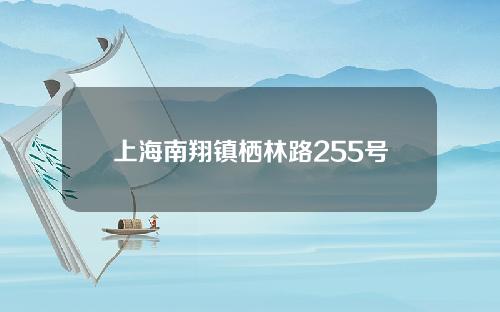今天带给大家A-level经济笔记是:第九章:Market Structure 1 市场结构1——The Costs and Benefits of Monopoly 垄断的成本和收益In the topic on 'Market failure', the fact that monopoly is a form of market failure was discussed

今天带给大家A-level经济笔记是:
第九章:Market Structure 1 市场结构1——The Costs and Benefits of Monopoly 垄断的成本和收益
In the topic on 'Market failure', the fact that monopoly is a form of market failure was discussed. It was shown, diagrammatically, that if a market is monopolistic in structure, then the price will tend to be higher and the quantity supplied lower than the totally efficient structure of perfect competition. Let's go over this again, but in the diagrams below, I have assumed that the AC curve, and therefore the MC curve, is horizontal, just to make the diagrammatical analysis easier to follow.
在 "市场失灵 "专题中,讨论了垄断是市场失灵的一种形式这一事实。图中显示,如果一个市场的结构是垄断的,那么价格会比完全竞争的有效结构要高,供应量要低。让我们再来看看这个问题,但在下面的图表中,我假设AC曲线,也就是MC曲线是水平的,只是为了使图表分析更容易理解。

The diagram above is the same as that above for the monopolist's equilibrium output, except the AC curve is horizontal instead of U-shaped. If this market were a monopoly, profits would be maximised where MC = MR (at point E) giving the equilibrium price Pm and quantity Qm. Imagine that this market were perfectly competitive. The equilibrium would now be where the market demand curve (AR) crosses the market supply curve (MC). This occurs at point C, giving the equilibrium price Ppc and quantity Qpc. As expected, the price is higher and the quantity lower if the market is a monopoly.
上图与垄断者的均衡产量的上图相同,只是AC曲线是水平的,而不是U型。如果这个市场是一个垄断市场,利润将在MC=MR(在E点)处达到最大化,从而得到均衡价格Pm和数量Qm。想象一下,这个市场是完全竞争的。现在的均衡点是市场需求曲线(AR)与市场供给曲线(MC)的交叉点。这发生在C点,给出均衡价格Ppc和数量Qpc。正如预期的那样,如果市场是垄断的,价格会更高,数量会更少。
What is the effect on society? We need to analyses this, in terms of consumer surplus and producer surplus (or profit). Go back to the topic called 'Supply and demand' if you can't remember what these two terms mean.
对社会的影响是什么?我们需要从消费者剩余和生产者剩余(或利润)的角度来分析这个问题。如果你不记得这两个术语的含义,请回到名为 "供应和需求 "的话题中。
If this market were perfectly competitive, consumer surplus would be the triangle ACPpc. The is no producer surplus (because AR = AC), so the consumer surplus represents the total benefit to society.
If this market were a monopoly, consumer surplus would be reduced to the triangle ABPm, due to the higher price, but there would be some producer surplus, equal to the rectangle PmBEPpc [producer surplus is the super normal profit, which is total revenue (OPmBQm)minus total cost (OPpcEQm)].
So, total benefit to society under monopolistic conditions is represented by the trapezium ABEPpc. Hence, as a result of this market moving from perfect competition to monopoly,there is a deadweight loss to society, represented by the triangle BCE. This is effectively the loss to consumers as a result of being denied the chance to purchase output QmQpc at prices between Ppc and Pm. Also, some would argue that the producer surplus, which was once consumer surplus, was better off in the hands of the consumers, rather than a few 'fat cat' monopolist managers.
So, monopoly is bad. Or is it? The following diagram shows a situation where market structure of monopoly might be better for society than perfect competition.
如果这个市场是完全竞争的,消费者剩余将是三角形的ACPpc。没有生产者剩余(因为AR=AC),所以消费者剩余代表社会的总利益。
如果这个市场是垄断市场,由于价格较高,消费者剩余将减少到三角形ABPm,但会有一些生产者剩余,等于矩形PmBEPpc[生产者剩余是超正常利润,即总收入(OPmBQm)减去总成本(OPpcEQm)]。
所以,垄断条件下的社会总利益由梯形ABEPpc表示。因此,由于这个市场从完全竞争转为垄断,社会有一个死重的损失,由三角形BCE表示。这实际上是消费者的损失,因为他们被剥夺了以Ppc和Pm之间的价格购买QmQpc产出的机会。另外,有人会说,生产者剩余,也就是曾经的消费者剩余,最好掌握在消费者手中,而不是少数 "肥猫 "垄断者的管理者手中。
所以,垄断是不好的。或者是吗?下图显示了一种情况,即垄断的市场结构可能比完全竞争对社会更好。

In the diagram above, monopoly is seen to be hugely beneficial to society. And why is this? Our initial analysis overlooked the fact that large firms usually benefit significantly from economies of scale. This shifts the AC curve downwards. If this shift is very large, as is assumed in the diagram above, then a monopolist may charge a lower price and produce a higher output than if the market were perfectly competitive. The monopolist maximises its profits. MC = MR occurs at point E, giving price Pm and quantity Qm. This means that consumer surplus increases from ABPpc to ACPm, and then, of course, there is the large producer surplus, the rectangle CEFPm. The total gain to society is the area BCEFPpc.
The final diagram shows the more realistic comparison. Society is likely to gain to some extent from the monopolist's economies of scale, but it will also lose out, as the monopolist will probably still set a higher price than if the market were perfectly competitive.
在上图中,垄断被认为是对社会极为有利的。这又是为什么呢?我们最初的分析忽略了一个事实,即大公司通常会从规模经济中获得巨大的利益。这使AC曲线向下移动。如果这种移动非常大,就像上图中假设的那样,那么与市场完全竞争的情况相比,垄断者可以收取更低的价格,生产更多的产品。垄断者会使其利润最大化。MC=MR发生在E点,给出价格Pm和数量Qm。这意味着消费者剩余从ABPpc增加到ACPm,然后,当然还有大量的生产者剩余,即矩形CEFPm。社会的总收益是BCEFPpc的面积。
最后一张图显示了更现实的比较。社会有可能在某种程度上从垄断者的规模经济中获益,但也会有损失,因为垄断者可能仍然会比市场完全竞争时设定更高的价格。

Hopefully by now you understand why the prices and quantities are where they are. The key point here is that society gains due to the economies of scale (area EFGPpc), but there is a loss due to the higher price and lower quantity (triangle BCE). So, we can write Overall Gain = EFGPpc ? BCE. The relative sizes of these areas will depend on the extent to which the monopolist can benefit from economies of scale. The bigger the drop in the AC = MC line, the larger the green box will be and the smaller the red triangle will be.
The benefit to society (the green box) is, in fact, just a benefit to the monopolist, whereas the loss to society (the red triangle) is a loss to the consumers. Which group in society is more important?
Moving away from the diagrams, there is another issue: innovation. Some argue that a monopolist can afford to spend huge amounts (often fruitlessly) on research and development. They are more likely, therefore, to create new, and better, products. Others would argue that due to the lack of competition that the monopolist faces, it relaxes, seeing no need to be innovative, whereas firms in a more competitive environment have the incentive to innovate to get ahead of the pack.
希望你现在已经明白为什么价格和数量是这样的。这里的关键点是,由于规模经济(面积EFGPpc),社会获得了收益,但由于价格较高,数量较少(三角形BCE),也有损失。因此,我们可以写出总体收益=EFGPpc-BCE。这些区域的相对大小将取决于垄断者能从规模经济中获益的程度。AC=MC线的下降幅度越大,绿色方框就越大,红色三角形就越小。
社会的利益(绿框)实际上只是垄断者的利益,而社会的损失(红三角)则是消费者的损失。社会上哪个群体更重要?
从图中移开,还有一个问题:创新。有些人认为,垄断者有能力在研究和开发上花费巨额资金(往往是毫无结果的)。因此,他们更有可能创造出新的、更好的产品。其他人则认为,由于垄断者面临的竞争不足,它放松了警惕,认为没有必要进行创新,而在竞争更激烈的环境中,企业有动力进行创新,以领先于其他企业。










